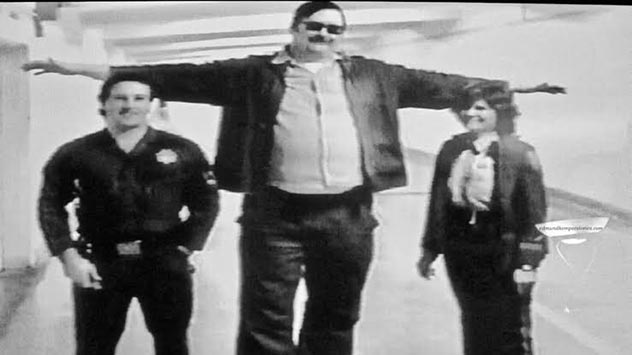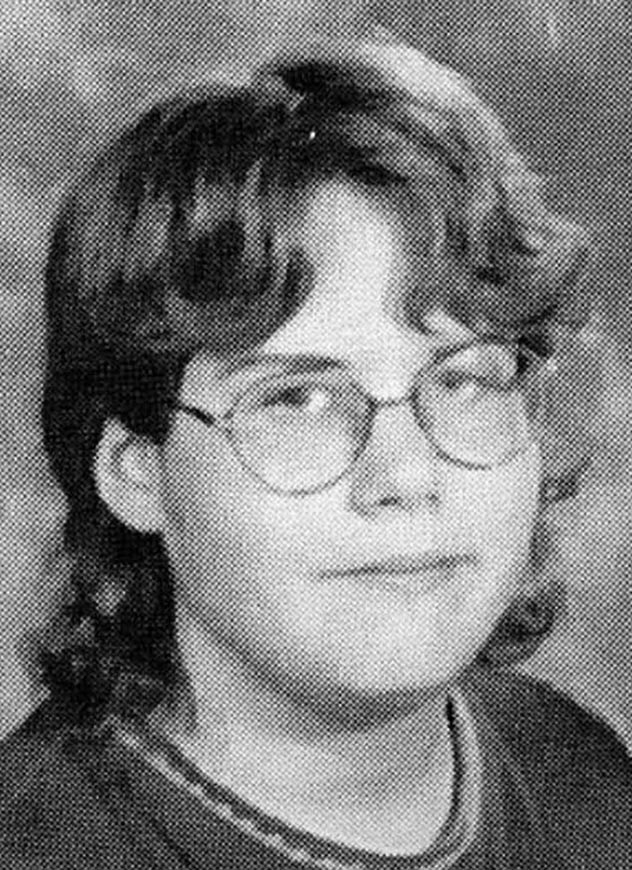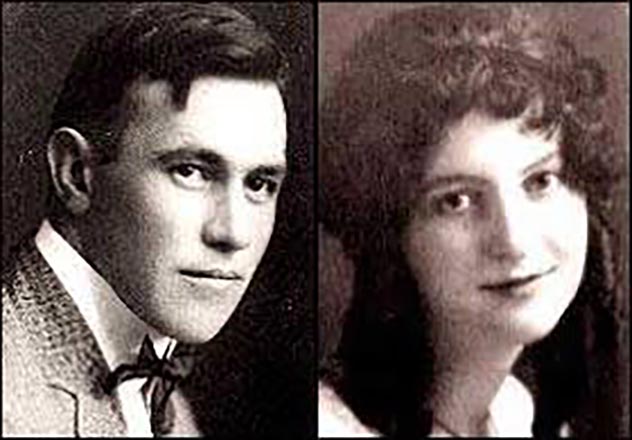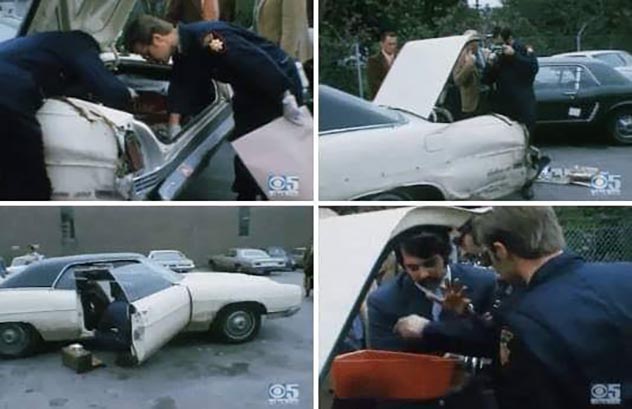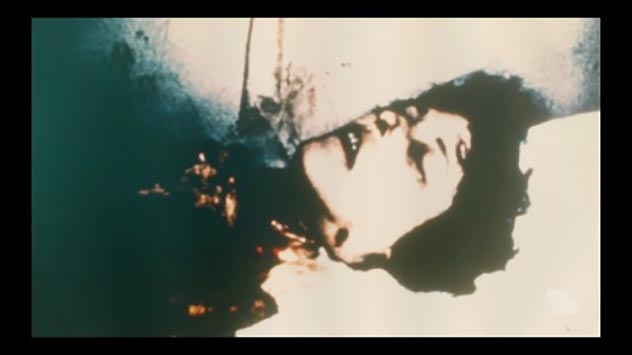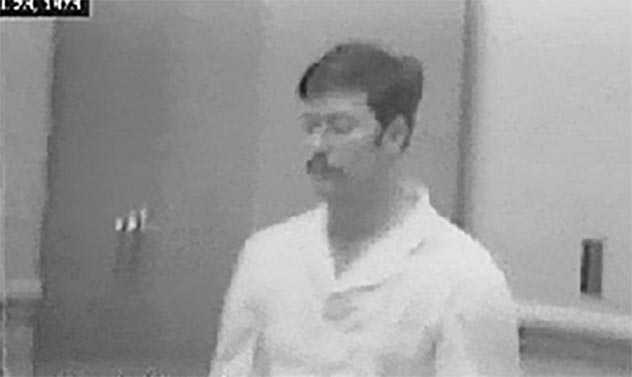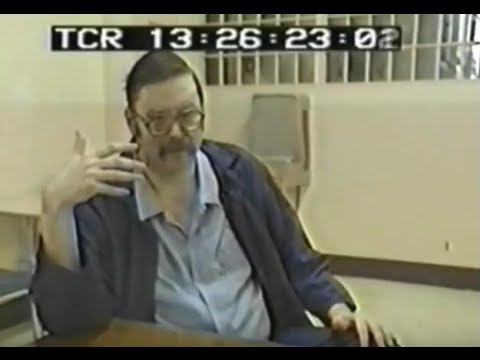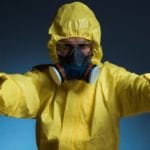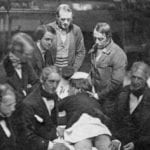SEE ALSO: 10 Gruesome Items Ed Gein Made From Corpses Following the hit Netflix series Mindhunter, an entirely new generation of true crime fans has become fascinated and terrified by Kemper as he was portrayed with eerie accuracy by actor Cameron Britton. The following facts explain exactly why—even decades after his sinister crimes took place. He’s still one of the scariest killers to have ever walked the earth.
10He Stands 6′-9” Tall and Weighs 250 Pounds
Born on December 18, 1948, in Burbank, California, Edmund Kemper’s parents had a turbulent marriage, and following their divorce, his mother continued to be abusive throughout his childhood. He later revealed his mother’s hatred stemmed from him looking so much like his own father. She would keep her son locked in a cold, dark basement at night; whereas, his sister was allowed to play freely upstairs. He stands 6 feet and 9 inches (2.05m) and weighs over 250 pounds (113kg). By the time he was in high school, he already stood a foot taller than his classmates. Due to his stature and high IQ of 145—he was able to overpower his victims mentally and physically. Investigators labeled him a “natural born killer.” The physical nature of Kemper paired with his abusive childhood created a boiling pot of rage in the young killer.[1]
9 He Mutilated Cats During Childhood
From a very young age, Kemper targeted and mutilated cats in his neighborhood. Former FBI Special Agent John Douglas revealed that Kemper would bury a cat alive, then dig it up before decapitating the creature and impaling its head on a stake. When he was 13 years old, he also killed his pet cat with a machete and hid the remains in his bedroom, which his horrified mother later discovered. For young serial killers, often abusing animals is their first experience at releasing tension. They start the process known as ‘victim selection’ and take their frustration out on the only thing often more vulnerable than themselves—an animal. Later in their criminal career, this aggression escalates, and they begin to prey on humans. Kemper was no exception. He did seek help from school counselors, but this was not beneficial as he revealed, “When I was in school, I was called a chronic daydreamer, and I saw a counselor twice during junior high and high school, and that was very routine. They didn’t ask me a lot of questions about myself and that was probably the most violent fantasy time I was off into.”[2]
8 He Killed His Grandparents Because He Was Bored
At the age of 15, Kemper ran away from his mother to avoid her abuse and decided to track down his father,r but he was rejected by him also. Instead, he was “shipped off” to live with his paternal grandparents on their farm in the California mountains. Kemper said he lived in “complete isolation” with his “senile grandfather” and “my grandmother who thought she had more balls than any man and was constantly emasculating my grandfather and me to prove it.” He added, “I couldn’t please her … It was like being in jail … I became a walking time bomb, and I finally blew … It was like that the second time, with my mother.” In August 1964, Kemper shot his grandmother in her kitchen with a hunting rifle, and when his grandfather returned, he also shot and killed him. Panicked, Kemper then called his mother, and she urged him to tell the police. When the police arrived, he told them, “I just wanted to see how it felt to shoot Grandma.”[3]
7 He Managed to Fix the Psychiatric Results in His Favour
Following the murders of his grandparents, Kemper was sent to the California Youth Authority in Atascadero. Psychiatrists found Kemper suffered from paranoid schizophrenia, and he was transferred to Atascadero State Hospital for the Criminally Insane. Due to his incredibly high IQ and seemingly pleasant demeanor, he managed to manipulate the hospital staff to allow him to access the assessment devices. He memorized the responses used in the assessment process and fixed his own test psychiatric results in his favor. On his 21st birthday, he was released from the hospital with a clean mental health record and was no longer required to return for further monitoring. Kemper was a free man. He returned to California and lived with his mother, but his real reign of terror was just about to begin.[4]
6 He Used a Cunning Trick to Make His Victims Feel Safe
Following his release from the hospital, Kemper applied to become a state trooper, but he was rejected based on his size. With no work prospects on the horizon, he became bored with his existence once again, and as we know from his previous crimes—a bored psychopath is a dangerous thing. Instead, he turned his attention to the high number of female hitchhikers in the area. In 1972, Kemper murdered 18-year-old Mary Anne Pesce, 18-year-old Anita Luchessa, and 15-year-old Aiko Koo. In 1973, he murdered 19-year-old Cindy Schall, 23-year-old Rosalind Thorpe, and 21-year-old Alice Liu. He had convinced the young co-eds, who were all in the prime of their lives, that he was not a threat to them by using a cunning trick to get them into his car. Kemper said, “Some girls weren’t really convinced. So, I looked at my watch, and I sighed like, ‘Come on, I don’t have time.’ And that convinced them—they had the impression I was in a hurry and didn’t have the time to hurt them.”[5]
5 He Was One of Three Killers in Santa Cruz at the Time
Edmund Kemper was not the only active serial killer in the Santa Cruz area in the early 1970s. Two other men, Herbert Mullin and John Linley Frazier, were also active in the area. The police even suspected Mullin of having killed two of Kemper’s victims, while Kemper was initially a suspect in one of Mullin’s killings. The police definitely had several investigative issues related to three active murderers at the same time. Mullin and Kemper both killed in very gruesome ways, and Mullin was eventually convicted on 10 counts of murder, in which he was sentenced to life in prison. The two serial killers also had some interaction while in custody. While in neighboring jail cells, Kemper performed what he called “behavior modification treatment” on Mullin by giving him peanuts whenever Mullin was “good” (he sometimes bothered other prisoners by singing, so Kemper splashed water on him). Mullin is still incarcerated and not eligible for parole until 2021. John Linley Frazier was a mass murderer who shot and killed a doctor, his wife, two sons, and the doctor’s secretary, which led to his conviction and death sentence in 1971. After California abolished the death penalty in 1972, his sentence was commuted to life in prison. His odd, religious behavior was revealed in the note he left behind at the murders, part of which said, “From this day forward, anyone and/or everyone or company of persons who misuses the natural environment or destroys same will suffer the penalty of death by the People of the Free Universe. I and my comrades from this day forth will fight until death or freedom against anyone who does not support natural life on this planet. Materialism must die, or Mankind will stop.” He was found dead, hanging in his cell in 2009 at the age of 63. With such prolific murderers in the area, Santa Cruz was dubbed the “Murder Capital of the World.”[6] And all this while California itself was flush with serial killers. The Zodiac Killer, the Night Stalker, the Manson Family, the Hillside Strangler, and several more were all active during the ’60s and ’70s. Was it something in the water?
4 He Murdered His Mother in the Most Brutal Way
The rage and disdain Kemper felt for his mother finally reached a boiling point in April 1973. On Good Friday, his mother—Clarnell Stage—returned home after a night of drinking and began arguing with her son. Kemper then entered her bedroom and bludgeoned her with a hammer before cutting her throat with a knife. He then decapitated the body and later revealed he pinned the head to the wall and screamed at it for an hour whilst throwing darts. He also confessed to ripping out her voice box, which he deemed appropriate as she “bitched and screamed” at him so much over the years. After hiding the body parts around the house, his mother’s close friend came over to the house, and he strangled her to death too. Later he said, “I certainly wanted for my mother a nice, quiet easy death like everyone else wants.”[7] Kemper targeted women as they reminded him of his mother and his overall hatred for women. He stabbed or strangled his victims and would later decapitate and dismember the corpses. Several discarded body parts were found washed up on the shore, and he buried a head in his mother’s backyard. The other heads he kept as sickening serial killer “trophies.”
3 He Confessed Everything to the Police Himself
On Easter Sunday 1973, Kemper fled his mother’s home following her murder and made his way to Colorado. He realized it would not be long before the crime was linked to him, so he rang the police back in Santa Cruz to make a full confession. Initially, the police did not believe his confession or were convinced they had finally caught the feared “Co-Ed” Killer.’ Kemper was close friends with the local police, often drinking with them in bars and restaurants. They referred to him as “Big Ed” and had revealed to him over time a lot about the murders, which allowed him to anticipate their next move in the investigation. They believed this was all one big prank from a friend that had become known as a friendly giant. Kemper waited for an officer to arrive and arrest him. He was considered legally sane and when asked what he believed was an appropriate punishment for his crime, he replied. “Death by torture.”[8]
2 He Terrified FBI Agent Robert K. Ressler During an Interview
Standford psychiatrist Donald Lunde interviewed Kemper from 1972 to 1973. The guards would lock them both in a small room, and a panic button under the table would alert them when they were finished. Lunde said, “I laughed at the notion that (he) might attack me. (He) had no reason to do so, and besides, the panic button would bring a squad of deputies instantly.” Kemper then reminded Lunde, “Has it ever dawned on you that I’m a foot taller and weigh damn near twice what you do?” When Lunde hit the panic button, it took seven minutes for the guards to respond. Former FBI Agent Robert K. Ressler had a similar interaction with Kemper. Bundled in the same interview room, Ressler hit the panic button, and the guards didn’t respond. Noticing his panic, Kemper chillingly told him, “If I went apeshit in here, you’d be in a lot of trouble, wouldn’t you? I could screw your head off and place it on the table to greet the guard.” The guards entered the room 30 minutes later.[9]
1He’s Still Around Today
On November 8, 1973, Kemper was found guilty of first-degree murder. He was sentenced to life behind bars and is currently imprisoned at the California Medical Facility. Since 1977, he has spent his time recording audiobooks and loaned his voice to Flowers in the Attic, The Glass Key, and The Rosary Murders, to name a few. He spent more than 5,000 hours in the recording booth at the prison and has received two awards for his efforts. However, the serial killer has no desire to leave prison as he’s quite content living out the rest of his life behind bars. Since 1985, he has waived his right to parole hearings. In 2017, Kemper’s lawyer stated, “His feeling is that—and this is his belief—no one’s ever going to let him out, and he’s just happy, he’s just as happy going about his life in prison.” In his 70s, he will spend the rest of his days in prison and—at the time of writing—in relatively good health; Kemper has outlived his victims by decades. Above is an interview with Kemper which I strongly recommend. His demeanor is chilling.[10] About The Author: Cheish Merryweather is a true crime fan and an oddities fanatic. Can either be found at house parties telling everyone Charles Manson was only 5ft 2″ or at home reading true crime magazines. Founder of Crime Viral community since 2015. Read More: Twitter Facebook
